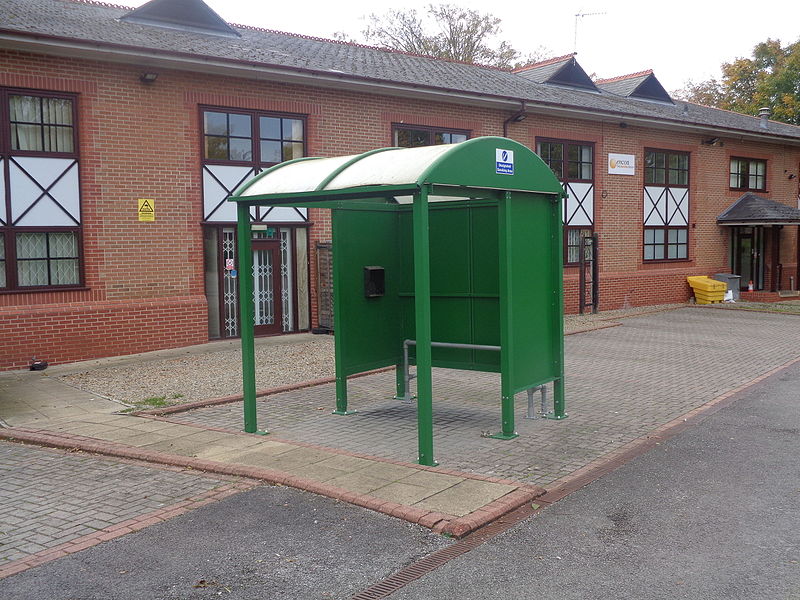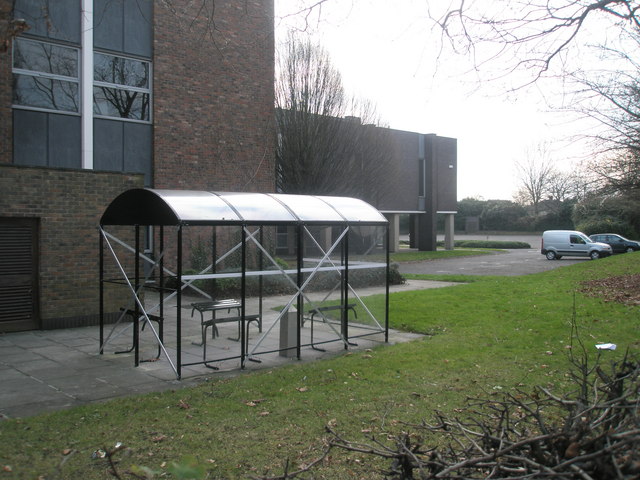Smoking shelters
Contents |
[edit] Introduction
Smoke-free legislation was introduced in phases during 2006 and 2007, which banned smoking in nearly all indoor environments (including workplaces and public spaces) across the UK
Scotland introduced the Prohibition of Smoking in Certain Premises (Scotland) Regulations 2006 on 26 March 2006. England passed The Smoke-free (Premises and Enforcement) Regulations 2006 on 1 July 2007. Wales followed suit under the Smoke Free Premises etc. (Wales) Regulations 2007, which became effective on 2 April 2007.
In conjunction with the ban, all indoor smoking areas or break rooms were banned, and smokers were required to go outside to smoke. E-cigarettes were not included under the bans.
[edit] The introduction of smoking shelters
While employers are not required by law to provide smoking shelters for employees, some have taken it upon themselves to provide them. However, these structures must also comply with the Smoke Free regulations and follow local rules (for issues such as noise, licensing and so on). Smoking shelters require planning permission from local authorities.
[edit] Building regulations
Small smoking shelters do not typically require building regulations approval unless the floor area is greater than 15m² and the shelter is located within one metre of a boundary. Large shelters (those over 30m²) generally will require building regulations approval.

|
| Smoking shelters became a common sight following the indoor smoking bans in the UK. Many workplaces now having little shelters like this, where workers can gather. |
Smoking shelters cannot be enclosed by doors, walls, windows or other structures that enclose more than 50% of the structure. This 50% rule also applies to shelters built with one open side against a wall or fence.
[edit] Location
Due to the open nature of these buildings, their location is important and should take into consideration:
- Noise. If many people gather at one time in the shelter, the noise could be disruptive to adjacent properties.
- Light. There is a chance the shelter will be used in the evenings, which means it will require lighting. This could also be considered a nuisance to neighbouring properties.
- Safety. While the shelter should be properly situated away from other structures, it should not be in a location where people could be put at risk (such as in a car park).
- Ventilation. The location of the shelter should be placed far enough away from nearby buildings so smoke will not enter through windows or ventilation systems.
- Brand. Smoking shelters can create a negative impression of an organisation if they are highly visible or next to main entrances.
[edit] Structural options
There are some smoking shelter options that may not require planning approval. These include lightweight gazebos or jumbrellas (or giant parasols). These structures must be sufficiently safe (they should be made from suitable fire resistant material) and structurally sound.
[edit] Related articles on Designing Buildings
- External works.
- Joint fire code.
- National Health Service Act of 2006.
- Pre-construction information.
- Shelter.
- Site rules for construction site.
- Types of building.
[edit] External resources
Featured articles and news
RTPI leader to become new CIOB Chief Executive Officer
Dr Victoria Hills MRTPI, FICE to take over after Caroline Gumble’s departure.
Social and affordable housing, a long term plan for delivery
The “Delivering a Decade of Renewal for Social and Affordable Housing” strategy sets out future path.
A change to adoptive architecture
Effects of global weather warming on architectural detailing, material choice and human interaction.
The proposed publicly owned and backed subsidiary of Homes England, to facilitate new homes.
How big is the problem and what can we do to mitigate the effects?
Overheating guidance and tools for building designers
A number of cool guides to help with the heat.
The UK's Modern Industrial Strategy: A 10 year plan
Previous consultation criticism, current key elements and general support with some persisting reservations.
Building Safety Regulator reforms
New roles, new staff and a new fast track service pave the way for a single construction regulator.
Architectural Technologist CPDs and Communications
CIAT CPD… and how you can do it!
Cooling centres and cool spaces
Managing extreme heat in cities by directing the public to places for heat stress relief and water sources.
Winter gardens: A brief history and warm variations
Extending the season with glass in different forms and terms.
Restoring Great Yarmouth's Winter Gardens
Transforming one of the least sustainable constructions imaginable.
Construction Skills Mission Board launch sector drive
Newly formed government and industry collaboration set strategy for recruiting an additional 100,000 construction workers a year.
New Architects Code comes into effect in September 2025
ARB Architects Code of Conduct and Practice available with ongoing consultation regarding guidance.
Welsh Skills Body (Medr) launches ambitious plan
The new skills body brings together funding and regulation of tertiary education and research for the devolved nation.
Paul Gandy FCIOB announced as next CIOB President
Former Tilbury Douglas CEO takes helm.
UK Infrastructure: A 10 Year Strategy. In brief with reactions
With the National Infrastructure and Service Transformation Authority (NISTA).























